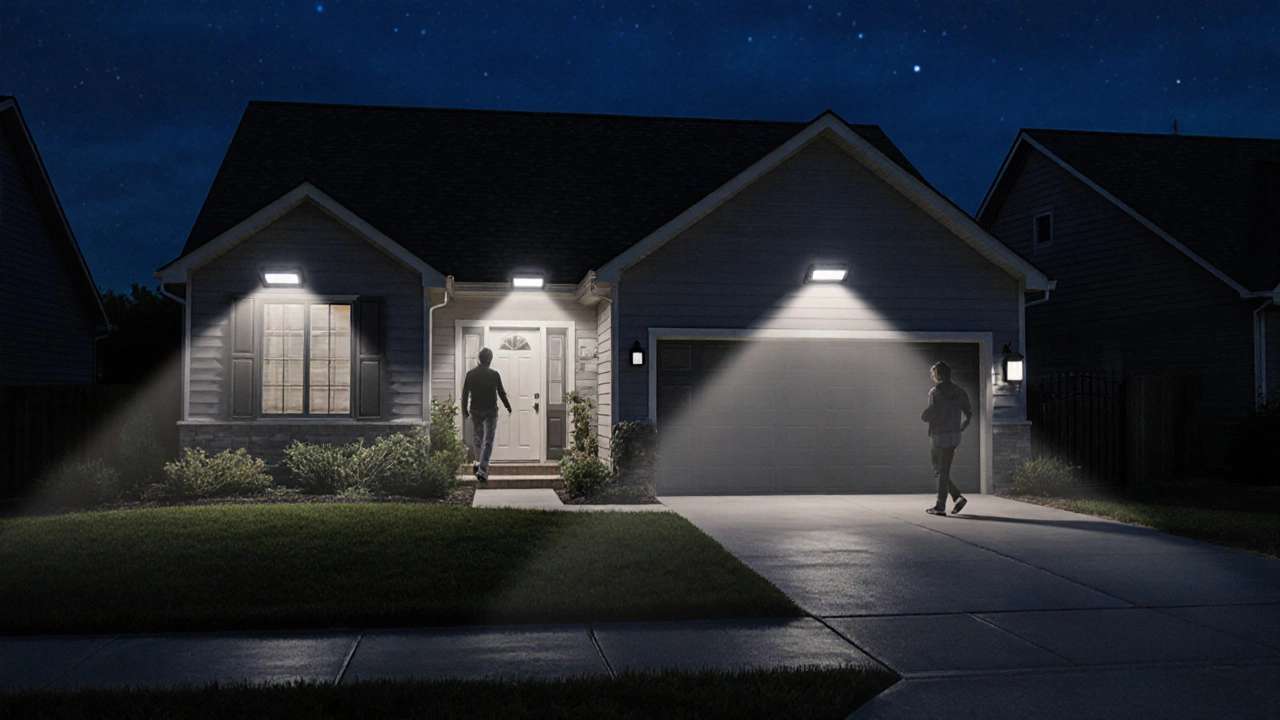When you think about home security, you probably imagine alarms and cameras—but outdoor security lighting, a simple yet powerful tool that makes your property harder to target by eliminating dark hiding spots. Also known as security lighting, it’s one of the first things burglars check before attempting a break-in. A well-lit yard doesn’t just look nice—it tells a potential intruder that you’re watching, and that they’ll be seen. The truth? Most homes have lighting, but very few have effective outdoor security lighting. Lights left on all night are useless. Flickering bulbs or dim LEDs? They’re just decorations. Real security lighting turns darkness into a disadvantage for criminals.
It works best when it’s tied to motion sensors. A motion sensor light, a smart lighting system that activates only when movement is detected, startling intruders and alerting homeowners. Also known as motion-activated lights, these are far more effective than constant illumination because they don’t waste energy and they create surprise—a key psychological deterrent. When someone steps into your driveway or approaches your back door and the light suddenly blares on, most will turn and leave. Studies show that 60% of burglars pick a different target if they see visible security features—and lighting is the most common one they notice. Combine that with a camera or alarm, and you’re not just lighting your yard—you’re building a layered defense.
Not all outdoor lights are created equal. LED security lights, energy-efficient, long-lasting, and bright enough to illuminate large areas without high electricity bills. Also known as LED outdoor lights, they’re the standard today because they last 5–10 years and work in freezing rain or scorching heat. Solar options are popular, but they often fail in winter or under tree cover. Hardwired systems are more reliable but cost more to install. The best setups use a mix: bright floodlights on the driveway and garage, focused spotlights on entry points, and motion sensors on the sides and back of the house. Don’t forget to angle them down—lights pointing up create shadows where criminals can hide.
And here’s what most people miss: lighting needs maintenance. A burnt-out bulb in the back corner? That’s a blind spot. A sensor covered in dirt or spiderwebs? It won’t trigger. Clean lenses, check batteries in solar units, and test the system monthly. Your alarm might be state-of-the-art, but if the lights are dead, it’s like having a silent alarm—you’re not warning anyone.
The posts below cover everything you need to know—from choosing between spotlight and floodlight for your driveway, to how motion sensors really work, to why some solar lights fail in winter. You’ll find real-world advice on installation, cost, and how to pair lighting with cameras and alarms for maximum effect. No fluff. Just what works.

Learn how to choose outdoor security lighting that actually works-covering brightness, color temperature, motion sensors, solar vs. hardwired, placement, and real-world tips for 2025. Stop guessing. Start protecting.